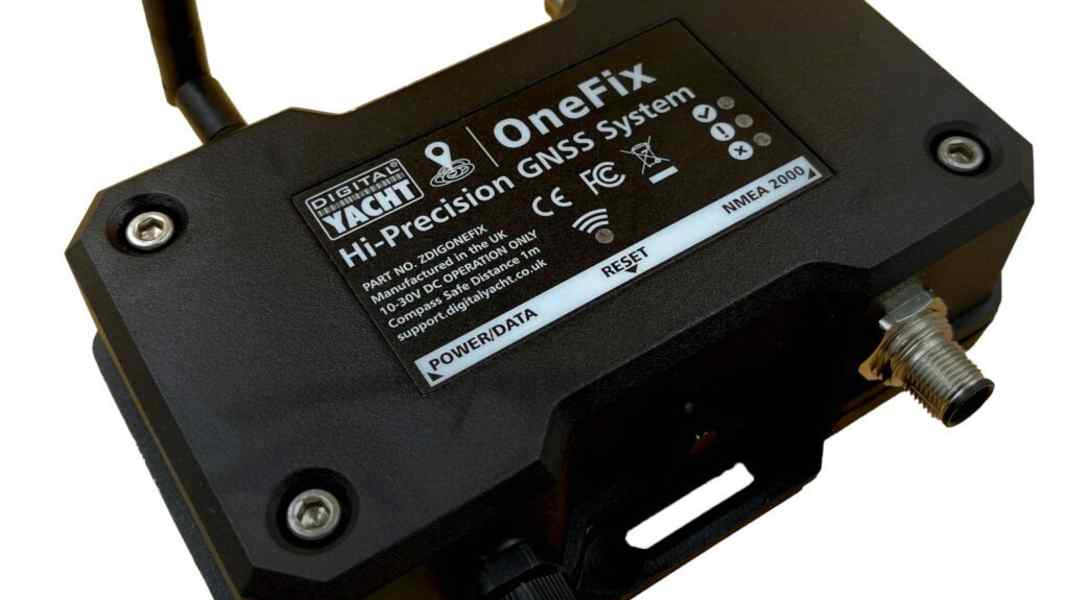
OneFix, the new GNSS position sensor from Digital Yacht, is designed to enable particularly precise positioning. Specially developed for maritime applications, the sensor achieves an accuracy of less than one metre. Unlike conventional GPS devices, OneFix utilises multiple satellite networks and innovative dual-band technology. Particularly noteworthy are the sophisticated anti-spoofing algorithms, which ensure significantly more reliable navigation. The positions of the different satellite systems are compared and interference is recognised and eliminated by computer. Another advantage is that the sensor can be easily connected to a wide range of navigation systems - from smartphones and tablets to NMEA 2000 chart plotters from various manufacturers. The aim is to provide a highly precise and reliable navigation solution, even in times when interference on the Baltic Sea is becoming increasingly frequent.
More than just GPS: GNSS technology in detail
While many boaters use the term GPS, GNSS (Global Navigation Satellite System) is the official name for the various satellite networks used to determine position. In addition to the well-known GPS, GNSS also includes systems such as Glonass, Galileo, Beidou and NavIC. Most modern marine electronics devices are able to receive and process signals from several of these networks. They automatically calculate which network should be used for the highest accuracy. OneFix takes this one step further and utilises data from all available satellite systems for optimal positioning. This comprehensive utilisation of different satellite networks contributes significantly to the exceptional precision of the system and ensures reliable navigation even under difficult conditions.
Dual-band technology for greater precision
Another technological advance is the introduction of multiband GNSS. With this technology, the signals of some satellite networks are not only transmitted in the conventional L1 band, but also in the L5 band. OneFix utilises precisely this dual-band technology to achieve significantly higher accuracy and reliability in positioning by providing even more data. Conventional GPS devices and most chart plotters only work with L1 frequencies and therefore cannot benefit from the additional accuracy. By using both frequency bands simultaneously, OneFix can better compensate for signal interference and provide more precise positioning data.
Innovative anti-spoofing technology for greater security
The anti-spoofing algorithms are a key advantage of the OneFix system. This technology protects against targeted manipulation of the navigation signals, often referred to as "spoofing". The algorithms implemented in OneFix recognise such attempts at manipulation and ensure that navigation remains reliable. This is a crucial safety aspect, which can be a particular advantage due to the increase in disturbed navigation data in the Baltic Sea region.
Universal compatibility for maximum flexibility
Another advantage of the OneFix system is its universal compatibility with various navigation devices. The sensor can be connected to smartphones and tablets via Wi-Fi, which makes it particularly interesting for sailors who use their mobile devices for navigation. At the same time, OneFix is fully compatible with modern NMEA 2000 chartplotters, which are standard on many boats. This versatility makes it easy to integrate the sensor into existing navigation systems without the need for extensive retrofitting or new purchases. Regardless of which system is used on board, OneFix can bring its precision advantages to bear and significantly improve navigation accuracy.
Technical data:
- Supported satellite systems: GPS, Glonass, Galileo, Beidou, NavIC
- Technology: Dual band (L1 and L5)
- Accuracy: less than one metre
- Special features: Anti-spoofing algorithms
- Compatibility: Smartphones, tablets, NMEA 2000 chartplotter
- Price: 474 Euro
Further articles on the subject of GPS interference:

